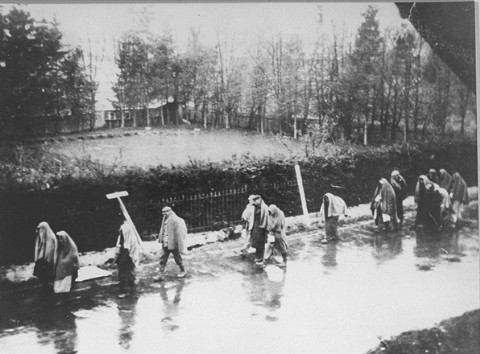 Applesauce–One of our first Rescues,
Applesauce–One of our first Rescues,
Adopted by Rosemary Hurley
The Miracle of Rescue Work and the History of Houston Sheltie Sanctuary
By Joan McAninch Samuelson, Founder with Tracy Crane
In 1996, my Tri Sheltie, Maggie Mae, died tragically at 26 months of congenital heart defect. In my grief, I went on line to research the disease and also met many Sheltie fanciers who became friends, including Ann Acuff, director of Middle Tennessee Sheltie Rescue. They said, “when you are ready, rescue your next Sheltie and all the others after.” I said, there is no rescue group in Houston. They replied, “go to the ASSA site and look.” Nope; only in Dallas. They said, “talk with Dorothy Christiansen,” the National Sheltie Rescue Coordinator.
After I called her and commented that there was no Sheltie rescue in Houston, Dorothy countered, “Then start one.” The next thing I knew I was on the national list as Sheltie rescue contact for Houston, and calls were coming in. What do I do next, Dorothy? “First, get the dog.” So I got the dog: the first one I rescued was an 8yo Sable I named Toby. He had been abandoned and found by another rescuer who called me from the ASSA list. I brought him home, bathed him, put out ads for him, took him to my vet: though he was healthy and beautiful, I never located his owner. I fostered him–and kept him—”failing” my first foster experience as many of us do. Toby lived another 7 years to the age of 12: a lovely senior gentleman who blessed my life. Rescued animals have that gift.
For the next two years, I received many calls from people who found or needed to give up Shelties and from people who wanted to adopt them: some dogs I re-homed with colleagues at the college where I teach and others with people asking for Shelties. But it was a slow and exacting process as I was also working full time. Then Dorothy suggested, “work with D/FW Sheltie Rescue and Becky Ramsey to get help with the dogs and organize a program.” So during those same two years, I met Becky in Buffalo, Texas with any dogs I needed help placing—she never said no to me. I was learning, helping dogs, and having fun, too, but I still desperately needed help.
Eventually, in 1998, Tracy Crane, also a Sheltie lover, called me: “Do you need some help?” And that is how Houston Sheltie Sanctuary was born. Tracy named the program, started the 501c3 process, opened the charity bank account, and made sure we went to our first dog show: we had a flimsy table, cardboard sign, and our personal Shelties, but we met a lot of Sheltie people and continued to learn. Soon after, we were called by a church in spring about a terrified Sheltie they could not entice or catch in the nearby woods where he had been dumped, though he was eating food they set out. We had teams working to rescue “the Church Sheltie” who was eventually caught by the determined Marty who was a seasoned runner and finally chased him down. She took him home and named him Rambler for his exploits; he had a blissful life in his loving home the rest of his days.
Then we rescued our first dog as Houston Sheltie Sanctuary, Nov 4, 1998. I named him KC for Kingwood College where I have taught since 1984. He had Heartworm disease, Cushing’s, and Hypothyroidism. He was underweight of course, had no coat, and was seriously compromised. My clinic, Loop 494 Animal Hospital, took him in as the first HSS Sheltie, and became our first clinic. Dorothy is known for helping fledgling rescue groups: she paid the bill for KC, and said, along with Dr. Herb, what a shame that our first official rescue was so terribly sick, but we would certainly learn a lot by the seat of our pants. The wonderful Dr. Herb used all his skills and saved KC’s life; Tracy fostered KC: under their loving care he became healthy and beautiful, though he would be on medication the rest of his life. In a few months we adopted him to a couple who fell in love with him and understood he would need special care. We had our first success and were thrilled.
As more dogs came into the program, Tracy and I recruited people who loved Shelties to volunteer with us. Our first Email List was a group chat we maintained together until I discovered and set up our Yahoo Group. Fortunately, through the years dozens more volunteers came on board and helped us continue to build the program. We all worked hard. Tracy was the business brains behind the operation the first year and kept us on our feet. I designed and maintained the web site with the kind help of D/FW and Southland rescues who let me use their pages as templates for our own web site. Others planned the dog shows and picnics; worked hard at funding drives; still others donated regularly; and of course the coordinators, rescuers, foster and adoptive homes made it all possible.
The founding of HSS happened as so many rescue groups do: individuals who want to help homeless and abused animals–in this case one woman encouraged into rescue work and helped by Dorothy, Ann, and Becky; joined by another woman who was doing this work while raising her daughter but wanted to help. Still more people, including Linda, Connie, Dawn, Jean, Darlene and so many others, took leadership positions, gave of their time, ideas, talent, and energy in every capacity rescue groups need. Tracy left after the first year because her daughter needed her, but I have never forgotten her or her vital role in this program. Thank you, Tracy: that first phone call from you made HSS possible.
Congratulations to all those working in the program today: the hardworking, talented membership has expanded remarkably and added tremendous funding activities, Facebook page, expanded booths at the dogs shows, dozens of foster homes, beautiful tee shirts, calendars, and more achievements to its success as a professional rescue organization that does them proud. The result of everyone’s efforts is that HSS has now saved well over a thousand Shelties in Houston since Toby, Rambler, and KC first needed rescue help in those humble beginnings.
Though after 14 years of rescue work since 1996, I retired from its rigors for personal and health reasons, the Houston Sheltie Sanctuary story and the dogs saved will always be precious to me. I congratulate HSS on the program’s 20th year and all the people who continue to make it one of the largest and most successful breed rescue programs in the nation. I hope additional volunteers continue to join, support, and donate to HSS for many more years as others helped me and Tracy found the program and establish its traditions those twenty years ago that are still enjoyed today.

Photo of one of the earliest picnics in the Woodlands, 2000, Joan on the far left, Linda and Connie in the center.




You must be logged in to post a comment.